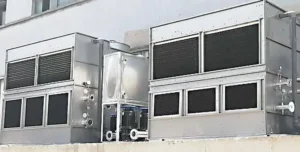Induction furnaces, as important heating equipment in modern industry, are widely used in metal smelting, holding, forging, and other fields. Their characteristics of high efficiency, energy saving, and environmental protection are inseparable from the coordinated work of various precision components, among which electrical components are undoubtedly the “heart” and “nerve center” of the entire system.
This article will take you to explore some core electrical components in induction furnaces and uncover their silent contributions behind the high temperatures.
Main Control Board, The Central Brain
The main control board is the control core of the induction furnace, integrating key components such as a microprocessor, memory, and input/output interfaces. Its main functions include.
- Receiving Operation Instructions: Responding to operator settings, such as power adjustment and temperature control.
- Logic Operation and Control: Performing logical judgments and calculations based on preset programs and sensor feedback signals, and issuing control commands.
- Protection Functions: Real-time monitoring of the system status. Once abnormal conditions such as overcurrent, overvoltage, or overheating occur, it can promptly issue protection signals and cut off the power supply to ensure the safety of equipment and personnel.
- Data Acquisition and Display: Collecting operating parameters such as furnace temperature, current, and voltage, and displaying them on the operating interface.
- Communication Functions: Some advanced main control boards also have communication interfaces, enabling remote monitoring and control.
Thyristor/SCR (Silicon Controlled Rectifier), The Key to Power Regulation
The thyristor is a semiconductor power device that plays a crucial role in induction furnaces, mainly used for.
- Power Regulation: By controlling the conduction angle of the thyristor, the voltage and current input to the induction coil are changed, thereby achieving precise adjustment of the furnace heating power.
- AC-AC Conversion: In some types of power supplies, thyristors are used to convert industrial frequency AC power into the required medium-frequency AC power.
The performance of the thyristor directly affects the heating efficiency and stability of the induction furnace. Therefore, choosing high-quality and high-reliability thyristors is essential.
Rectifier Bridge, AC to DC Conversion
For furnaces using thyristor-based medium-frequency power supplies, the rectifier bridge is a key component for converting the input AC power into DC power. It typically consists of multiple diodes or thyristors, rectifying the industrial frequency AC power into DC power to provide a stable DC power supply for the subsequent inverter stage.
InverterBridge, DC to Medium-Frequency AC Conversion
The inverter bridge is the core component of the induction furnace power supply. It converts the DC power output from the rectifier bridge into the required frequency AC power to supply the induction coil. The inverter bridge usually consists of multiple thyristors or IGBTs (Insulated Gate Bipolar Transistors), which generate medium-frequency AC current through specific switching control strategies.
Protection Circuit, Safety Barrier
The protection circuit is an important guarantee for the safe operation of the induction furnace. It can monitor various abnormal conditions in the system and quickly cut off the power supply when danger occurs, preventing equipment damage and personal injury. Common protection circuits include.
- Overcurrent Protection: Prevents excessive current from damaging components such as thyristors and transformers.
- Overvoltage Protection: Prevents excessive voltage from damaging electronic components.
- Overheating Protection: Monitors the temperature of key components to prevent overheating and burnout.
- Phase Loss Protection: Cuts off the power supply when there is a loss of phase in the input power, protecting the equipment.
- Cooling Water Failure Protection: Monitors the flow rate and temperature of the cooling water to prevent equipment overheating due to poor cooling.
Sensors, The Eyes of Information
Various sensors act as the “eyes” in the induction furnace, real-time monitoring the operating status of the system and feeding the data back to the main control board for processing. Common sensors include.
- Temperature Sensors: Measure furnace temperature, cooling water temperature, etc.
- Current Sensors: Measure the current in the induction coil.
- Voltage Sensors: Measure the power supply voltage and the induction coil voltage.
- Water Level Sensors: Monitor the water level of the cooling water.
- Flow Sensors: Monitor the flow rate of the cooling water.
Reactor/Inductor, Energy Storage and Filtering
A reactor is an energy storage component that mainly plays the following roles in induction furnaces.
- Smoothing Current: Reducing current fluctuations and improving the stability of the power supply.
- Limiting Short-Circuit Current: Limiting the rate of rise of current during a short circuit, protecting other components.
- Power Factor Correction: Improving the power factor of the system and increasing energy utilization.
Capacitor, Resonance and Power Factor Compensation
Capacitors in induction furnaces are usually combined with the induction coil to form a resonant circuit. Their main functions include.
- Providing Reactive Power: Compensating for the reactive power required by the induction coil, improving the power factor of the system.
- Forming Resonance: Causing the circuit to resonate at a specific frequency, improving heating efficiency.
Conclusion
The normal operation of an induction furnace depends on the close cooperation of the above-mentioned key electrical components. Understanding their functions and principles helps us to better operate, maintain, and manage induction furnace equipment, promptly identify and troubleshoot faults, and ensure smooth production. With the continuous development of technology, the electrical components of induction furnaces are also constantly being upgraded and innovated, moving towards higher efficiency, greater intelligence, and higher reliability.







